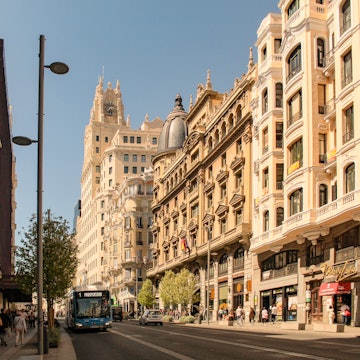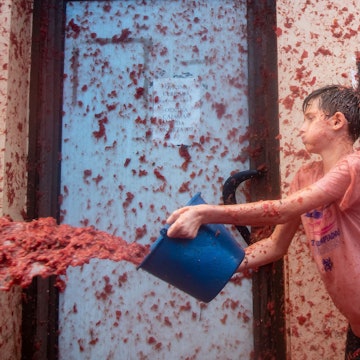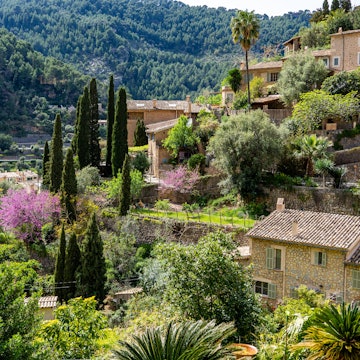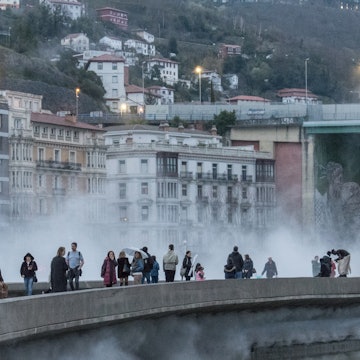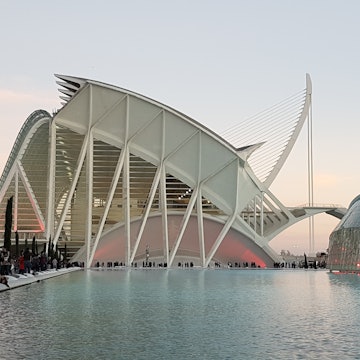

The stripped-down architecture of Madrid’s Reina Sofia complements the museum’s superb collection of 20th-century works, including Picasso’s “Guernica” © pedrosala / Shutterstock
Madrid is home to some of the best art museums in the world.
With huge collections that bring together many of the best artists ever, the stars of the show are undeniably the Prado, the Reina Sofia and the Thyssen-Bornemisza museums. Yet these world-famous institutions are not the only places worth visiting. Outside the “Golden Triangle of Art” (along the leafy boulevard where these three powerhouses are found), there’s a whole host of art museums to explore, many off the beaten track.
We’ve put together a roundup that covers the classics – and ventures further out to explore the wilder edges of the art world. From medieval to modern and everything in between, here’s our list of the best art museums in Madrid.
Visit the Reina Sofía for superlative modern and contemporary art
Housed in a former hospital from the 18th century, the Centro de Arte Reina Sofía has an austere, stripped-down feel that perfectly complements the modern artwork displayed on its bare white walls. Pride of place, of course, is given to Picasso’s enormous Guernica – an agonizing depiction of the carnage of war that often leaves visitors open-mouthed in shock and emotion.
While the collection focuses on work by such Spanish artists Salvador Dalí and Joan Miró, the museum regularly hosts touring international exhibitions. Before visiting, check the website to see what temporary shows are showing at the museum’s satellite galleries in Retiro Park, a pleasant 15-minute walk away. Whatever’s on, you can be sure that entry to these two annexes is always free of charge.

Museo del Prado has the best collection of classics
This incredible collection testifies to the eye-watering wealth of Spain’s royal family. “Liberated” during the Napoleonic invasion before being returned to the Spanish monarchy, these masterworks were then installed in a beautiful space that opened to the public in 1819. Don’t miss Hieronymus Bosch’s weird and wonderful Garden of Earthly Delights, Goya’s psychologically disturbing Black Paintings and Velázquez’s enigmatic masterpiece Las Meninas.
We should note (and you surely will) that the artists celebrated within these hallowed walls are mostly male, as at most art museums (alas). Curators comically failed to redress this imbalance in a recent exhibition designed to celebrate women in art: out of the 130 artworks featured, only 60 were by female artists. If this gets you down, be sure to seek out a lesser-known gem in the galleries: Sofonisba Anguissola’s 16th-century portrait of King Philip II. We love taking the measure of a man who was not only the ruler of what was once the most powerful empire on the planet but also the owner of its most kick-ass art collection.
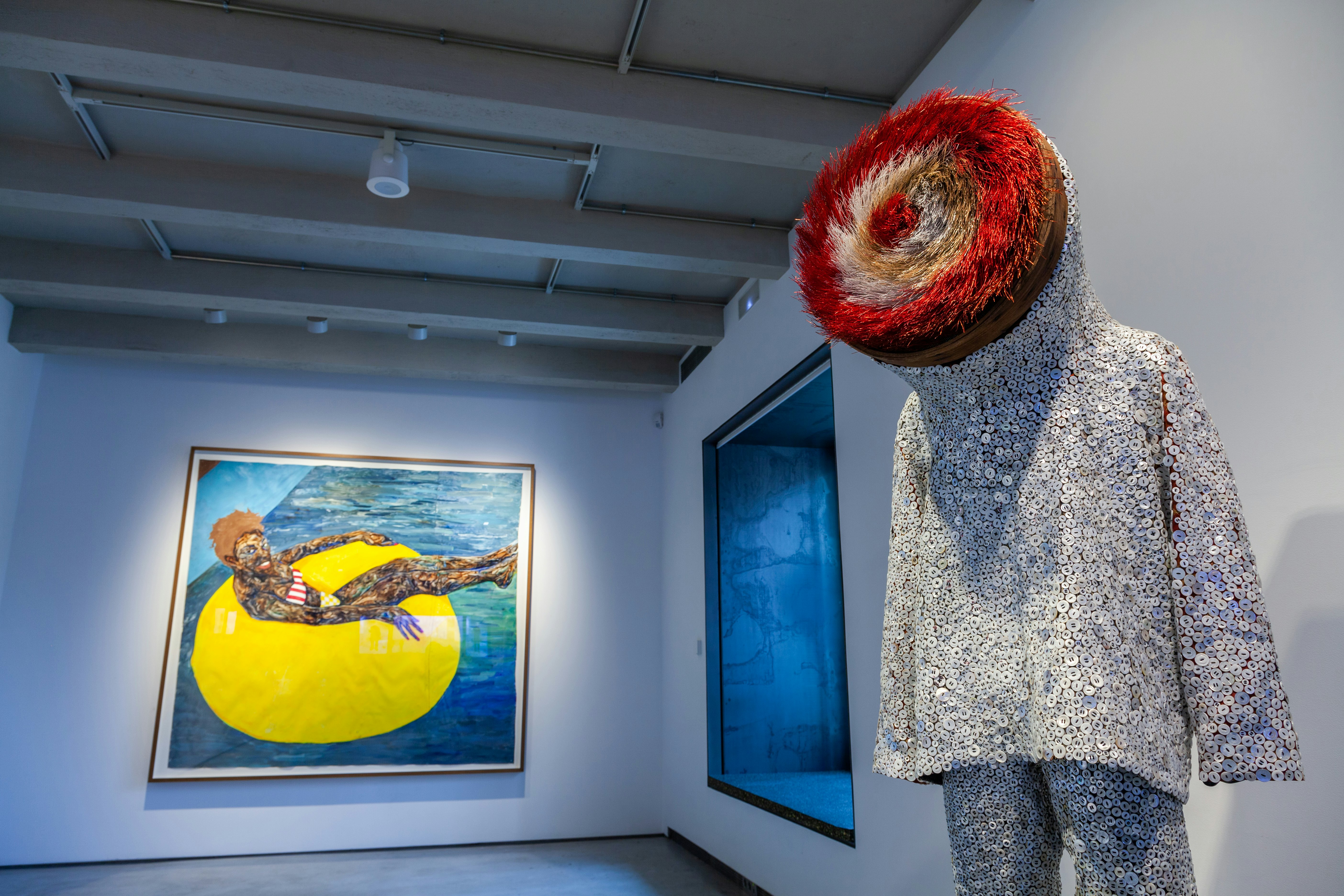
Make an appointment to visit the exclusive Espacio Solo
This private museum is open to the public by appointment only. By the Puerta de Alcalá in one of the most exclusive parts of town, visitors gain access here by ringing a doorbell and riding up to the gallery space in a glass elevator. Once inside, a guide takes you around a labyrinth-like space that houses an impressive collection of ultra-modern artwork. The experience is often disorienting, with the viewer confronted by AI machines generating a churn of images and text, or by sculptures of human figures that appear to be breaking apart. Yet despite its evident oddness, the collection is deeply cool, with a strong pop-art sensibility running throughout. Here, vinyl toys, skateboards and gorilla heads made from cardboard merit the same importance as traditional paintings and sculptures. The overall feel is luxurious and achingly chic – yet if do manage to snag an appointment, admission to this one-of-a-kind collection is absolutely free of charge.
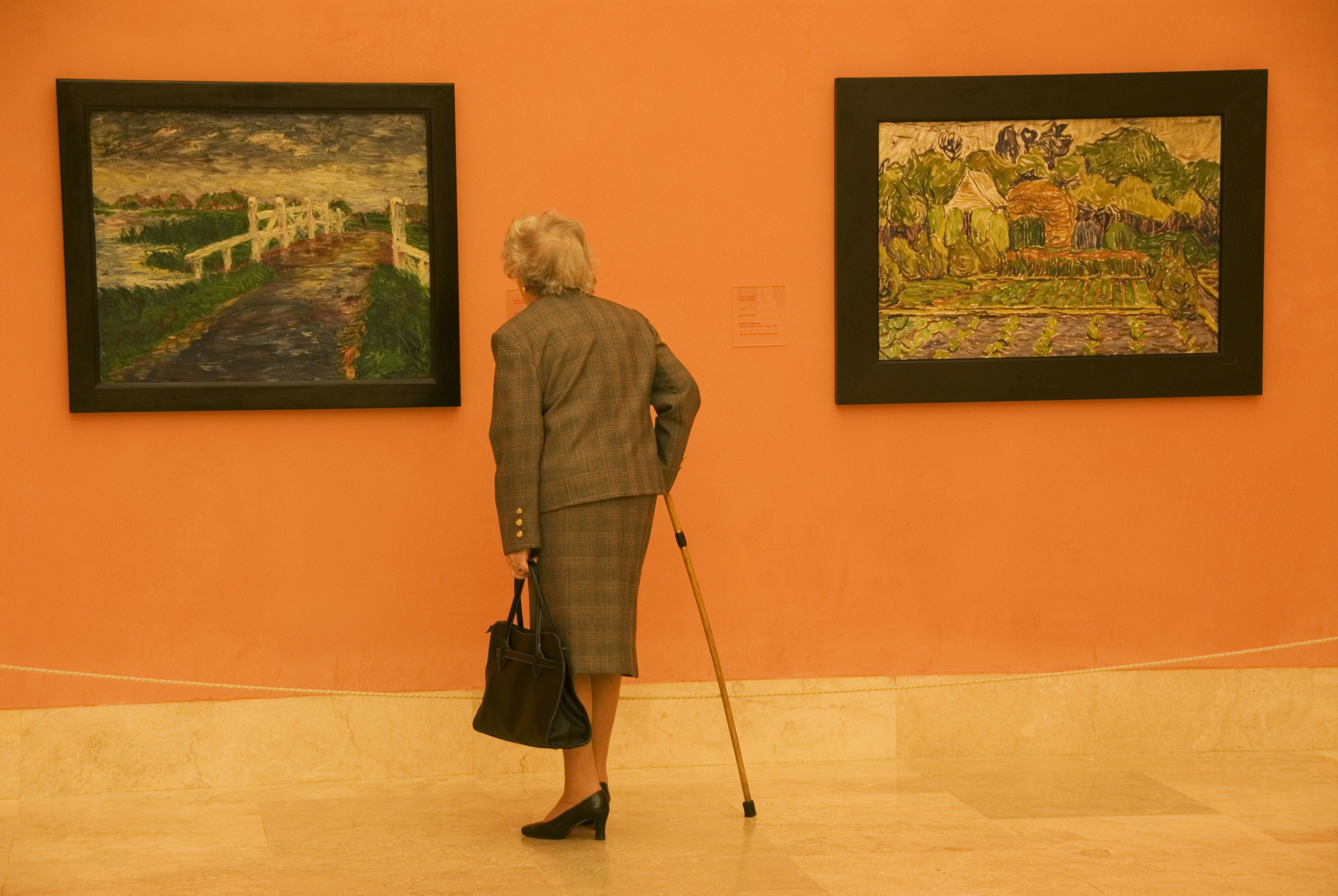
The Thyssen-Bornemisza Museum displays Madrid’s most comprehensive art collection
Baron Thyssen-Bornemisza’s collection has occupied a mansion set back from the Paseo del Prado since 1992. During his lifetime, the baron acquired artworks from major artists with the enthusiasm of a young boy trading baseball cards. Including illustrious works by Dürer, Caravaggio, Degas and Roy Lichtenstein, the comprehensive collection will satisfy the most fickle of art connoisseurs.
The late baron’s likeness gazes down at the masses from the salmon-pink walls of the lobby, beside a matching portrait of his widow. Although the baroness’s diaphanous white gown appears to have sprouted wings, she remains very much alive and kicking. This former Miss Spain, who resides in the tax haven of Andorra, made the headlines recently when she removed Gauguin's Mata Mua from the country during lockdown – a bargaining chip of sorts in negotiations with the government. Now that she’s received a whopping $115.4 million from the state, the Gaugin has been returned.
The Sorolla Museum is Madrid’s most intimate art gallery
Famous for his ability to capture light on canvas, Joaquín Sorolla’s paintings hang on the walls of the Prado and London’s National Gallery. The largest collection of his luminous work, however, can be found in this namesake museum, which occupies his former home in the upmarket district of Chamberí. Famous for his devotion to family, Sorolla often depicted joyful domestic scenes set against lush landscapes – tableaux that are as lively today as when he painted them over 100 years ago.
The perfect antidote to a mild case of museum fatigue, a visit through the museum’s light and airy rooms will last no longer than an hour, leaving plenty of time to relax in the lovely garden. Complete with fountains, potted plants and decorative tiles, this outdoor space was designed to resemble the Arabic-style landscaping of the Alhambra, perhaps giving you the impression that you’ve just wandered into one of Sorolla’s artworks.
See just how radical artworks can be at La Neomudéjar
This cutting-edge art museum is located in an enormous industrial space that is falling apart at the seams – only gracefully. Formerly a training center for railway employees, the crumbling red-brick building was rented out for a nominal fee in 2013 to a pair of artists with a vision. The idea was to create an independent space to showcase artwork that goes beyond the conventional to embrace the deeply political, including feminist, queer and anti-capitalist themes.
Much of the work engages with the space itself – and for that reason, the peeling walls, rusting signs and rail signals have all been left untouched. Video installations, graffiti murals and performance art further add to an anarchic vibe reminiscent of ’90s Berlin. Visitors wanting more of the same can head to a recently opened sister museum, Zapadores City of Arts. Covering a 23,000 sq m space in the outskirts of Madrid, this former army base is now a vast playground for avant-garde artists.

See art in swank galleries at Museo Lázaro Galdiano
A bibliophile and art lover, journalist Lázaro Galdiano spent his days collecting paintings, books and objects d’art. Gifted to the state after his death, this dragon’s hoard of a collection is now on display in his grand mansion, located in the heart of the swanky Salamanca district.
With Beaux-Arts architecture that’s at once grand and comfortable, the building has a quirky charm reminiscent of The Grand Budapest Hotel. We recommend riding up to the third floor in the wonderful 19th-century wood-and-glass elevator, where you’ll find an impressive display of works by Goya, José de Ribera, Velázquez and other Spanish masters. Other galleries in the museum feature works from across Europe, with a particular draw Hieronymus Bosch’s strange and beautiful Meditations of John the Baptist. Displayed alongside the paintings is a dazzling array of jewels, ceramics, coins and weapons. Our favorite is the room full of beautifully decorated armors.
Celebrate the art of graffiti at Factory of Dreams
Art in Madrid is not limited to the inside of museums: it spills out onto the streets – literally. Turn any corner and you’ll come upon colorful murals painted by some of Europe’s top graffiti artists. The city itself can be viewed as an open-air art museum in its own right, and lovers of the medium of graffiti will find some of the best work in the trendy Lavapiés district.
These days, street art is increasingly going mainstream, with works by the biggest names now finding their way into galleries. One of Spain’s biggest names is Okuda San Miguel, whose murals have appeared in New York, Paris and Hong Kong. A prismatic riot of color, his work is by turns attractive and slightly unsettling, an aesthetic that saturates the exhibition space he has just opened in the up-and-coming neighborhood of Usera, which has debuted with an initial exhibition of his work. In the future, the work of other artists from his agency Ink and Movement will also be on display.

Take in the arts in their many forms at La Casa Encendida
Besides regular exhibitions, La Casa Encendida hosts a constantly changing lineup of theatrical performances, workshops, conferences and concerts. In addition to all this artistic activity, the 100-year-old building also houses a coffee shop and a lovely rooftop bar that has great views of the city. In summer, this space gets activated with regular concerts and open-air screenings of cult classics.
As the space is slightly out of Madrid’s bustling center, it’s a great venue to while away a quiet hour contemplating some modern art. The contemporary art exhibitions that are a specialty here lean heavily toward the conceptual, with shows dealing with such timely themes as infection and the beauty hidden in the quotidian.
Tips for planning your Madrid art-museum excursions
Once you’ve decided where to go, it’s worth doing a little bit of strategic planning. To avoid standing in a long queue, book tickets in advance for the Prado, the Reina Sofia and the Thyssen-Bornemisza. As these museums tend to be busier in the mornings and evenings, we recommend turning up around 2pm. While everyone else is out to lunch, you’ll be free to gorge on the main masterpieces in peace. Though entry fees in Madrid are relatively cheap compared to other European capitals, if you are on a budget we suggest checking museum websites before a visit. Many of the art museums mentioned here have set hours or entire days when entry is free.









